‘From land to food, we are on the front line’: Why the fate of Odesa is crucial for us all
Bel Trew speaks to those looking to protect their embattled city and explores the impact the blockade of the port will have on the wider world


Anton Chekhov is said to have joked he spent half his salary on ice cream in the city. Alexander Pushkin penned parts of his masterpiece Eugene Onegin there. And Nikolai Gogol, when wintering in town, wrote what would ultimately become the discarded second part of Dead Souls in a flat near the Potemkin Stairs.
These literary greats are just some of the Russia-claimed historical figures who have descended on the Ukrainian city of Odesa, founded by Catherine the Great in 1794 as the jewel in the crown of her empire. It is this overly romanticised, Russian-dominated history of Odesa that makes it such a prize for Vladimir Putin.
Since Putin ordered the invasion of Ukraine on 24 February, his eyes have been on Odesa, the “pearl of the Black Sea” that is crucially Ukraine’s biggest commercial port, a supply lifeline, and the predominantly Russian-speaking gateway to the north and west.
A successful takeover of the city would not only be a symbolic and economic catastrophe for Ukraine – likely causing a domino effect that could hasten the fall of much of the country – but it could have an impact on the world. Many fear it could also form a land bridge to Russian-backed separatist areas in neighbouring Moldova.
So far, as exemplified by the soft heartbeat of outgoing air defence fire from the beaches, Ukrainian troops have succeeded in preventing Russia’s offensive from moving on the coastal city. They aren’t far off – Russian forces have occupied key port cities like Kherson, which lies just 90 miles to the east, as well as Berdyansk and Mariupol.
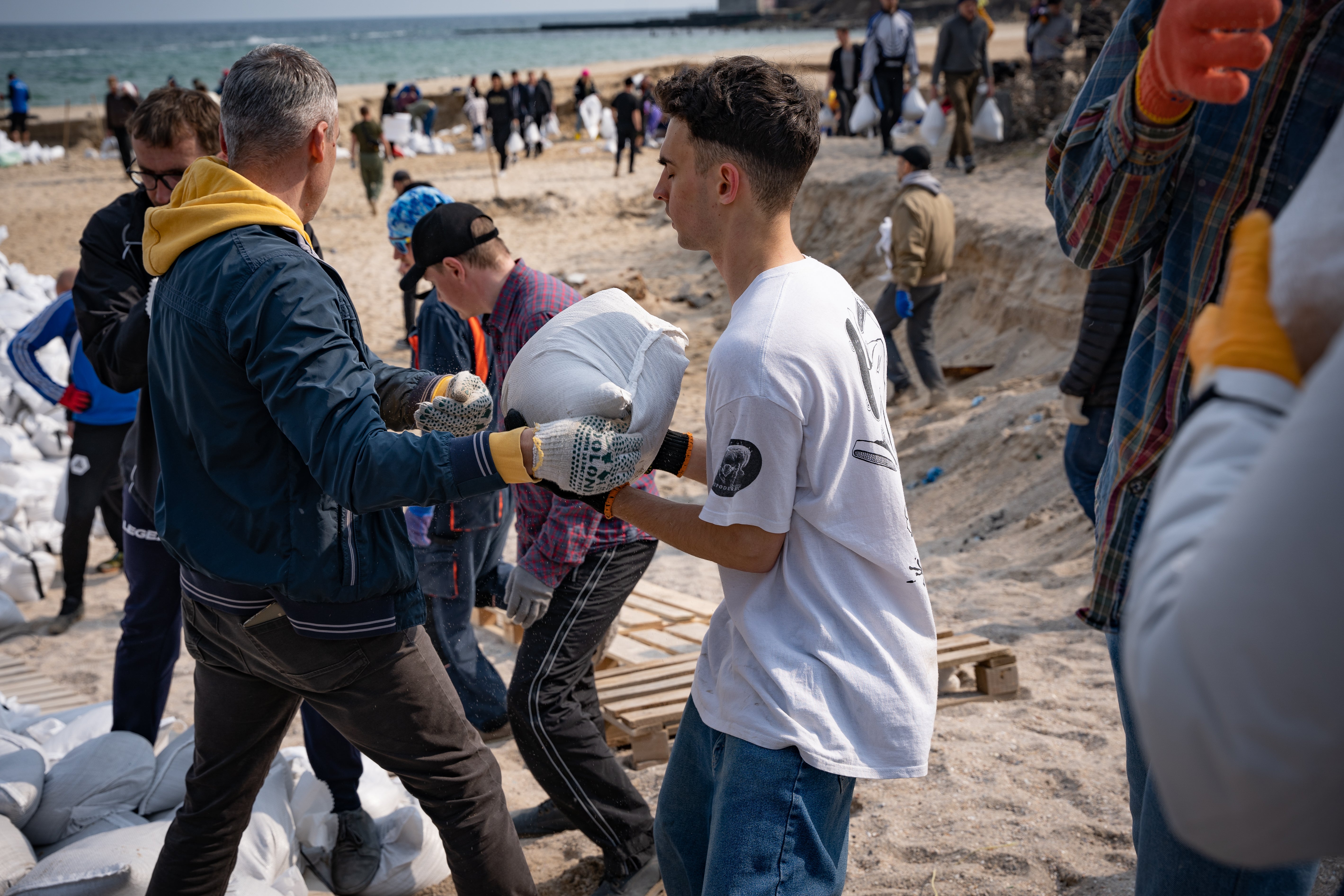
Outgunned, Kyiv currently lacks the military forces and equipment to liberate those towns. But that means that however bristling with soldiers and weaponry, however well-mined its beaches and waters are, however oversubscribed its territorial and civil defence is, Odesa is always under threat of attack, says its vice-mayor Oleg Byndak.
“Russia wants to make it the capital of their captured territories of south Ukraine, but they have so far failed and that is why they have changed their strategy to striking civilian objects not military now,” Bryndak tells The Independent. He stands in front of the sandbagged statue of the city’s 19th-century governor Duc de Richelieu, which crowns the famed Potemkin Stairs. Behind him, the distant whomp of outgoing fire sounds in the background.
“Odesa means everything to them. But actually, they have achieved the opposite of their goals,” he claims. “The city was once divided by different points of view, politics and forces, but everyone has come together. We are united and will stand and fight.”
The city is still under sporadic attack, and members of the military administration tell The Independent that Russian ships regularly hit the shoreline, trying to work out the city’s defences. However, after the initial grim panic at the start of the war, residents of Odesa have largely emerged from their basements where they have had to hide, up to the streets of the town, where the sandbagged monuments – like the statue of Catherine the Great, and the 19th-century opera house – glint in the sunlight.
In spite of the intermittent wail of the air raid sirens, shops, restaurants and bars are now open and busy: a rhythm has begun anew. Besides the packed open-air book market in town, a jazz cafe runs musical evenings from its balcony, even as they coordinate the creation of homemade bulletproof vests.
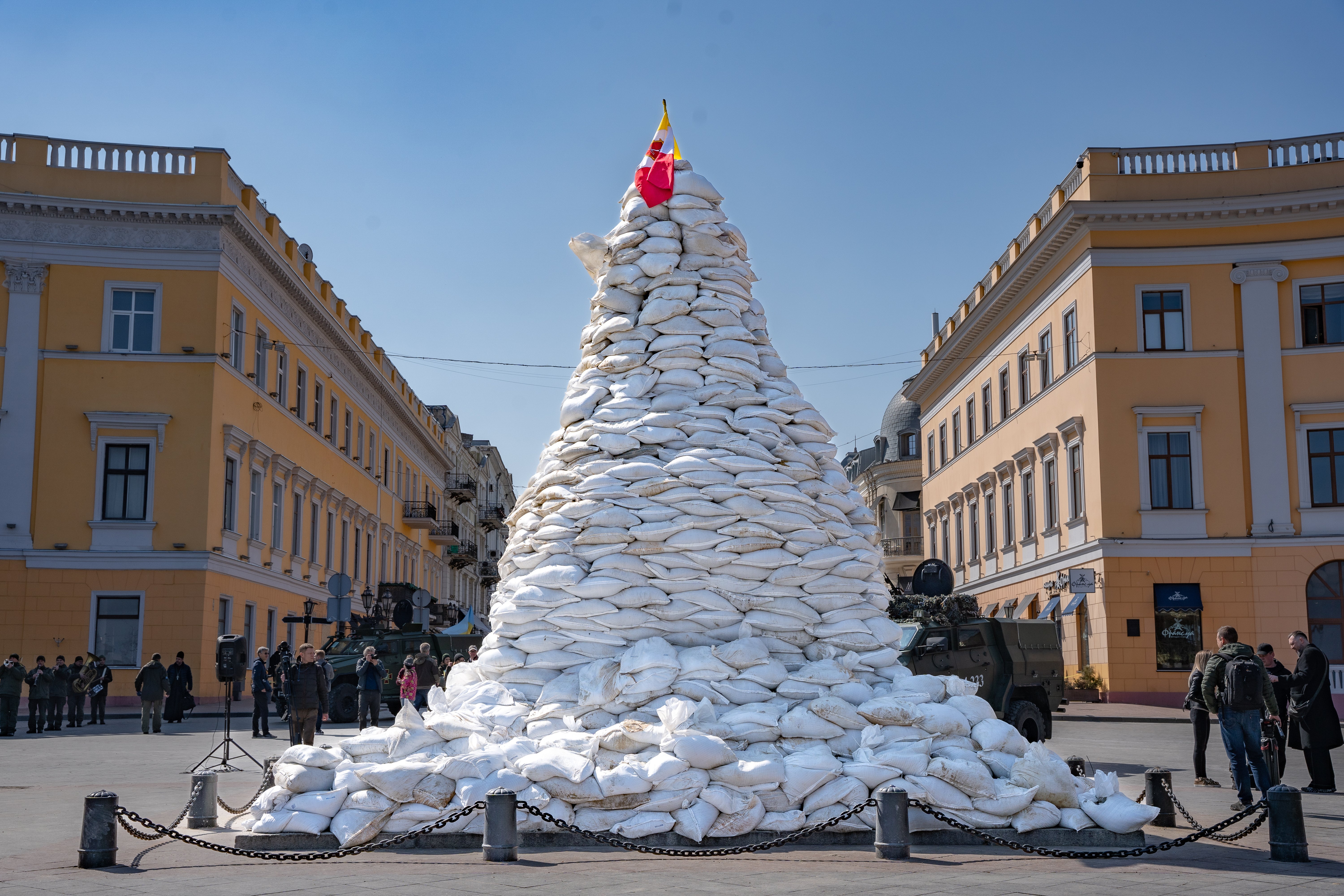
Gyms have been turned into training grounds for civilians to learn how to defend themselves with rudimentary small arms. The beach is still a never-ending conveyor belt of fresh sandbags – with local musicians playing music to keep up the spirits of the volunteer workforce. Resilience and preparation are popular words.
“Why the f*** would I leave?” asks Roberto Armarolli, a loquacious Italian chef, inside his popular restaurant, which is located underground. Despite pleas from his embassy to evacuate, he has stayed put, and now helps out volunteer initiatives – the proceeds from his restaurant go to the Ukrainian army. Armarolli says he has noticed a big change since the war erupted more than 100 days ago: people have started speaking Ukrainian despite Odesa being a predominantly Russophone city. The previous fraught political factions, even those who were pro-Russia, have come together against the invaders, he says. “Putin achieved the miracle of uniting Ukraine. And so he may win the fighting but he will never win the hearts of Ukraine. There will be partisan fights to come.”
That is echoed by Marina Vasiluk, 30, a former party planner who now spends her day coordinating nearly 1,000 volunteers making sandbags to send to the front. Morale is high where they are packing the bags, despite the fact Russian ships leer over the horizon.
“Even in the first few days of the war, people have shown massive amounts of unity and bravery, and continue to do so,” she says. “They want Odesa because they want to stop our ships, to stop our humanitarian aid hub, to stop our exports, to choke us through encircling us. We cannot and will not let that happen.”
***
The next problem brewing on the horizon in the south of Ukraine is the wheat harvest due next month.
Even if Russian boots don’t take a single step inside Odesa, Moscow’s capture of neighbouring ports and seas to the northeast, and the Ukrainians’ need to defend their waters, have already had a devastating effect on exports, and global food security.
Ukraine is nicknamed the breadbasket of the world for good reason. It feeds hundreds of millions of people worldwide – as the fifth-largest exporter of wheat, and a major exporter of corn and barley. It is also responsible for 50 per cent of the global sunflower oil market. In fact, Ukraine accounts for about 6 per cent of agricultural trade around the world, explains Joseph Glauber, senior research fellow at the International Food Policy Research Institute in Washington.
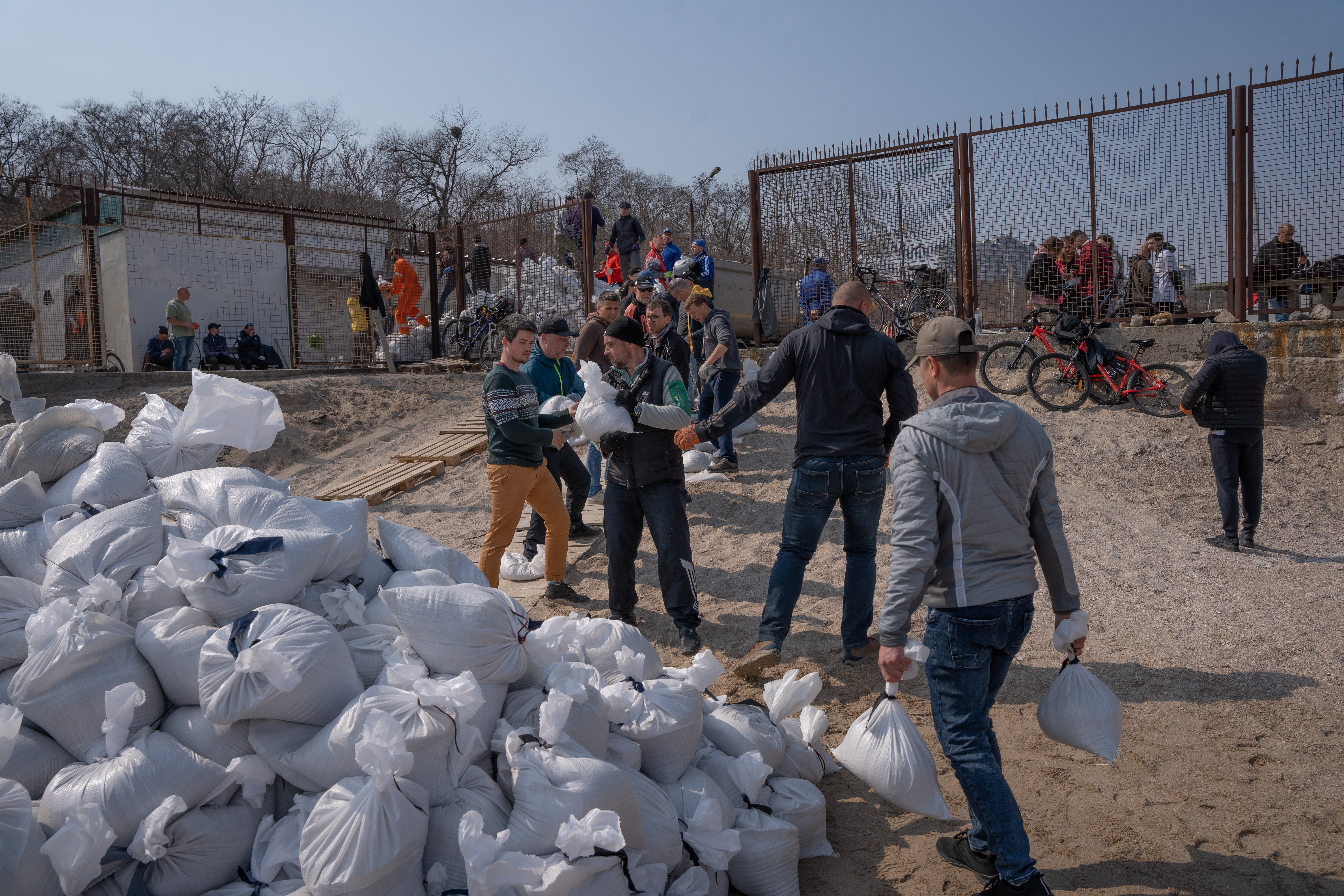
And at least three-quarters of those agricultural exports go out through the Odesa region. “The whole country is plumbed to drain out through Odesa, and that is why it is so difficult right now,” he tells The Independent.
The Russian blockade on much of the Black Sea and the Sea of Azov – together with the Ukrainian defensive mining of the waters around the coastline it still holds – means none of Ukraine’s ports are operational, even if some remain comparatively untouched.
“They can’t shift the produce overland by rail to ports on the Baltic Sea or Romania, Bulgaria or Croatia, countries which have offered,” Glauber says. “Ukrainian authorities say it quadruples the cost of transportation to go by rail. We can see the impact of that right now – grain prices are so high.”
This chokehold on Ukraine’s grain exports, combined with other global issues like the impact of the war on Russia’s agricultural industry, and droughts in the US and Canada, has pushed wheat prices up by more than 50 per cent this year. That threatens famine in places like war-ravaged Yemen, which imports all its wheat and cannot absorb that kind of price hike.
It is also a major contributor to world food prices hitting an all-time high in March. This will only get worse as the war drags on.
Right now there are already 20 million tonnes of grain stuck in Ukraine, according to Ursula von der Leyen, the president of the European Commission, who recently accused Russia of using hunger as a weapon.
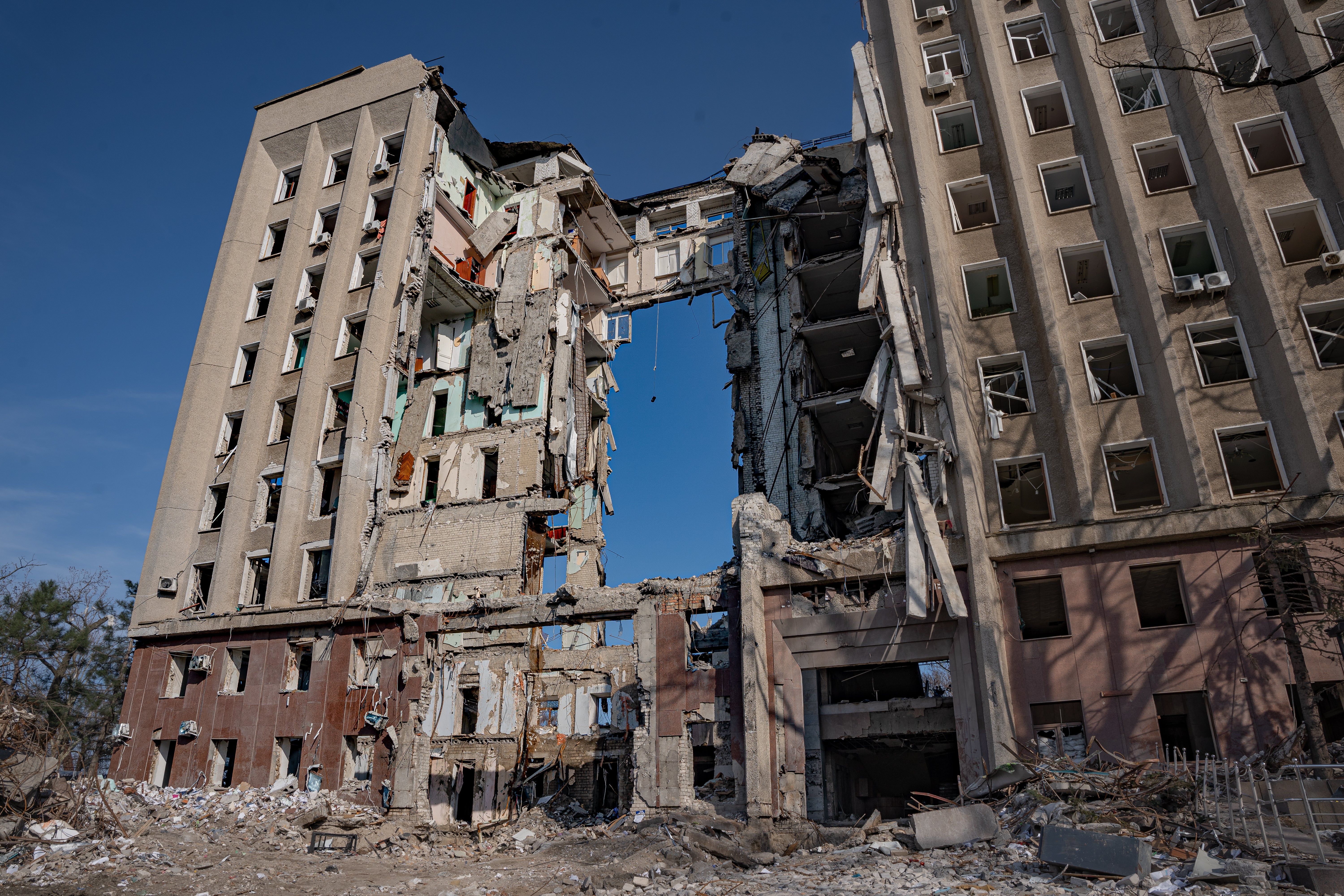
The new wheat harvest in Ukraine starts in a month’s time. The big question is where the fresh harvest of grain will go, and how much it will affect the world if it can’t be exported. “We could have as much as 62 million tonnes of grain that Ukraine will have to store or handle somehow,” Glauber says.
He suggests people are scrambling to find innovative ways to shift the excess without having to rely on the sea, even reviving old Soviet train tracks that go through Romania. “But it all takes time and investment ... Even under the best circumstances we won’t see a moderation in prices until at least mid-2023.”
Knowing this, Russia has already begun to leverage a strong bargaining position, offering to unblock ports in exchange for the west lifting hefty sanctions. President Putin has also explored other potential gains, telling Russian state TV in an interview on Friday evening that Ukraine could export grain from ports including Odesa if it cleared them of mines – effectively stripping the coastline of its chief line of defence.
So far, Ukraine has not acquiesced. Turkey is leading diplomatic talks with Moscow to try to free the grain stores for transport. Ukraine has accused Russia of stealing grain supplies from the area it controls – claims that the US secretary of state Antony Blinken has called “credible”, and the UK has asked to be investigated.
Fears only increased this week when the Russian defence minister Sergei Shoigu said that the Ukrainian ports of Berdyansk and Mariupol, now under Moscow’s control, have been de-mined and are ready to resume grain shipments.
Moscow has denied it has stolen grain, and instead blamed Western sanctions for the situation, which has threatened to trigger a global food crisis.
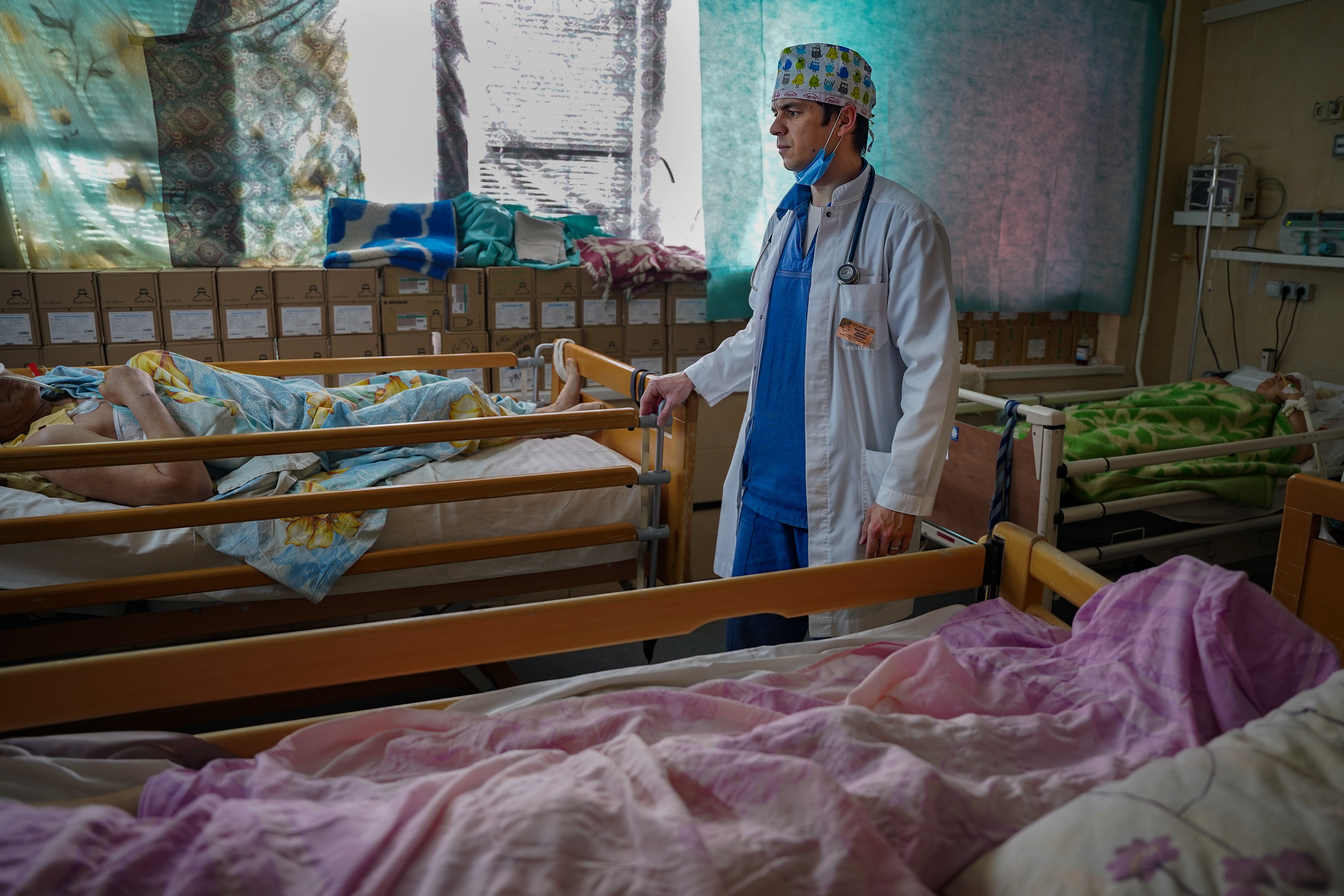
Ukraine on Wednesday dismissed as “empty words” assurances from Russia’s foreign minister, Sergei Lavrov, that Moscow will not use the situation to its advantage if Kyiv allows grain shipments to leave safely via the Black Sea.
“Military equipment is required to protect the coastline, and a navy mission to patrol the export routes in the Black Sea. Russia cannot be allowed to use grain corridors to attack southern Ukraine,” Foreign Ministry spokesperson Oleg Nikolenko tweeted.
***
Just 60 miles down the coast, over a partially bombed bridge, the mayor of Mykolaiv grimly admits that his town and the surrounding region are the main bulwark stopping Odesa and the south of Ukraine from falling.
“They need to move forward on Odesa. They tried before to surround our city and get past it. We have managed to push them back,” Oleksandr Senkevych says from a cafe, just a few hours after a suspected cluster munition killed 10 in a busy shopping street a few hundred metres away. “They are now shelling us twice a day with illegal cluster munitions in civilian areas. They are lashing out because they are losing. They are acting like an angry ex-partner,” he jokes bitterly.
There is a weird and uncomfortable calm in the town, as citizens, not knowing what could come from the sky, go about their daily business until the next explosion comes.
As an air raid siren sounds, I stumble past a children’s playground where a spent rocket is wedged into the ground next to a multicoloured swing and seesaw – it looks to me like the cargo section of a Smerch that would carry the banned bomblets.
One of the main hospitals was bombed the night before, and the main administrative building has a gigantic hole gouged by an airstrike. And the intensive care units of another hospital are full of the wounded from the attack on the centre of town.
“They want to frighten us into giving up,” the mayor says wearily. “They want to lay the groundwork for bringing troops back, and they want to keep the exports halted.”
Another concern is the strategic positioning of the Mykolaiv and Odesa regions on the road to Moldova.
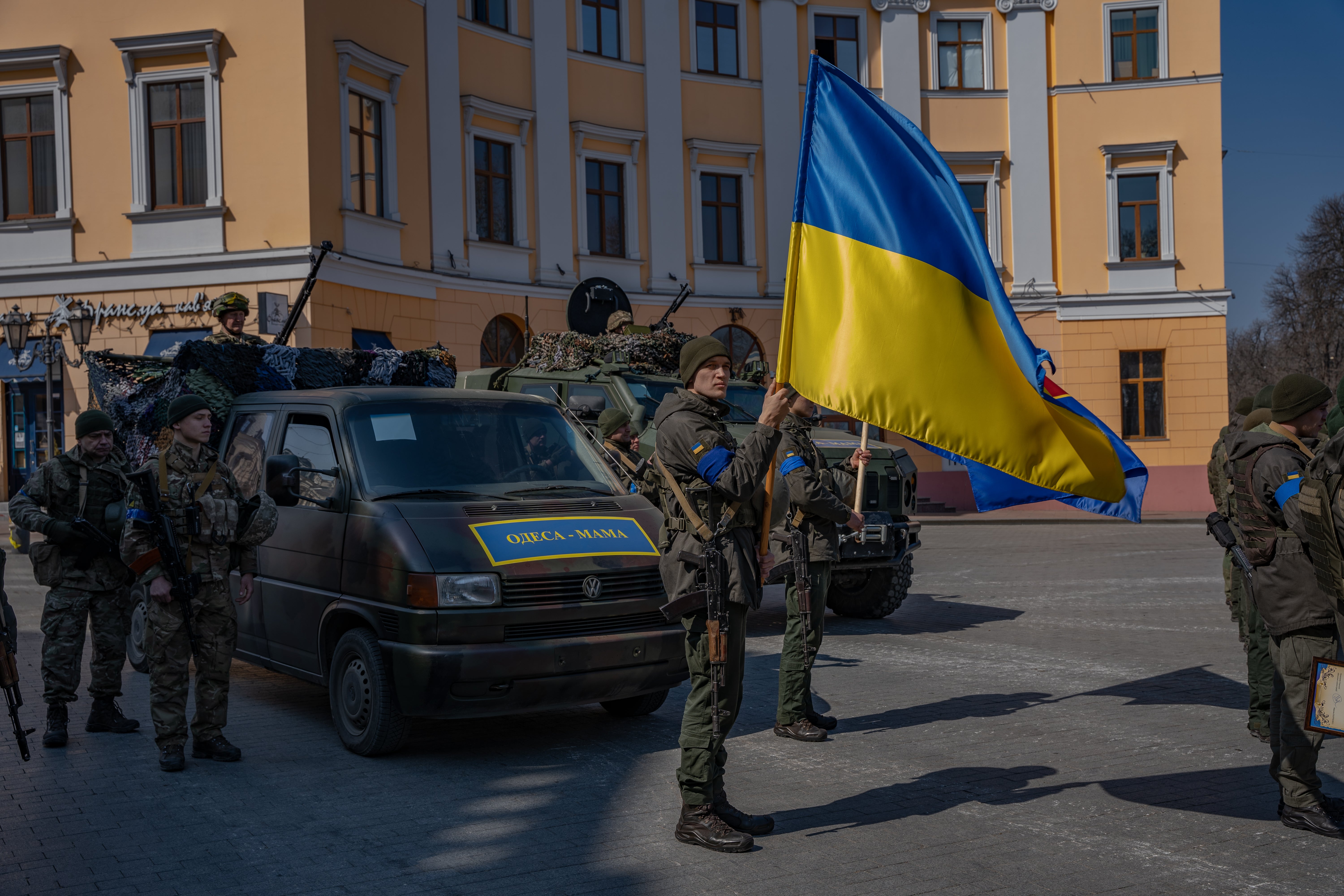
Tensions are rising in neighbouring Transnistria, a Russian-backed breakaway region on Moldova’s southeastern border with Ukraine that is home to an estimated 460,000 people.
If Russia were able to plough through Mykolaiv and then Odesa, joining up with the separatist region, it would completely seal Ukraine off from the south, while offering the Russians a strategic diving board to attack the north and the west of the country. It would also bring them very close to Nato’s most eastern part: Romania.
That still remains extremely unlikely, because of how heavily fortified Odesa is and the gains the Ukrainians have made on the borderlands of Mykolaiv and Kherson. But it has rattled parliamentarians in Moldova, which although pro-EU, is a member of neither Nato nor the union, and so enjoys none of the security cover its western neighbours do. Speaking to European news outlet EUobserver, Moldovan MPs said they have to “face up to the reality” that if the Odesa region and city falls, “Moldova is next”.
Fearing this, the country has been quick to declare neutrality.
Back in Odesa, residents know these threats remain on the horizon. Volunteers do not want to assume they have survived the worst and that war will never come.
And so they keep busy, weaving military netting, making sandbags, molotovs and bulletproof vests. Local residents keep up their training.
Vice-mayor Bryndak says the coastline cities are “all in one boat together” and are working to try to fend off the devastating takeover of the south, even as Russia takes ground in the east. Too much is at stake, he says.
Before fading into a small military parade taking place behind him, he concludes: “I want to repeat the words of our president. From land to food, we are on the front line of a Third World War. It is not just against Ukraine; it is against civilians of Europe, of the greater world.”






Join our commenting forum
Join thought-provoking conversations, follow other Independent readers and see their replies
Comments